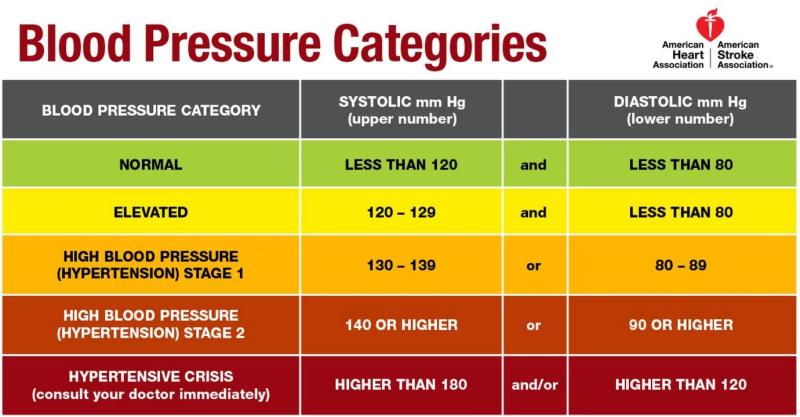 Prehypertension has been omitted in the new guideline. Source: LiveScience/AHA
Prehypertension has been omitted in the new guideline. Source: LiveScience/AHAPrehypertension, particularly in the high range, appears to heighten the risk of total cardiovascular diseases (CVDs), coronary heart disease (CHD), myocardial infarction (MI) and stroke, according to the results of a systematic review and meta-analysis.
The investigators conducted a detailed search of PubMed, Embase and Web of Science for articles published through 7 November 2018. Normal range blood pressure was defined as systolic (S)BP <120 mm Hg and diastolic (D)BP <80 mm Hg.
Risk ratios (RRs) and 95 percent confidence intervals (CIs) were pooled using fixed effects models. The heterogeneity among subgroups was estimated through meta-regression.
Twenty-seven articles (47 studies including 491,666 participants) met the eligibility criteria. Prehypertension showed a significant correlation with total CVDs (RR, 1.40, 95 percent CI, 1.34–1.46), CHD (RR, 1.40, 95 percent CI, 1.28–1.52), MI (RR, 1.86, 95 percent CI, 1.50–2.32) and stroke (RR, 1.66, 95 percent CI, 1.56–1.76).
Low-range (120–129/80–84 mm Hg) prehypertension vs normal BP increased the risk of total CVDs (RR, 1.42, 95 percent CI, 1.29–1.55), MI (RR, 1.43, 95 percent CI, 1.10–1.86) and stroke (RR, 1.52, 95 percent CI, 1.27–1.81), while high-range (130–139/85–89 mm Hg) prehypertension increased the risk of total CVDs (RR, 1.81, 95 percent CI, 1.56–2.10), CHD (RR, 1.65, 95 percent CI, 1.13–2.39), MI (RR, 1.99, 95 percent CI, 1.59–2.50) and stroke (RR, 1.99, 95 percent CI, 1.68–2.36).
The population-attributable risk for the association of total CVDs, CHD, MI and stroke with prehypertension was 12.09 percent, 13.26 percent, 24.60 percent and 19.15 percent, respectively.
“Effective control of prehypertension could prevent more than 10 percent of CVD cases,” the investigators said.